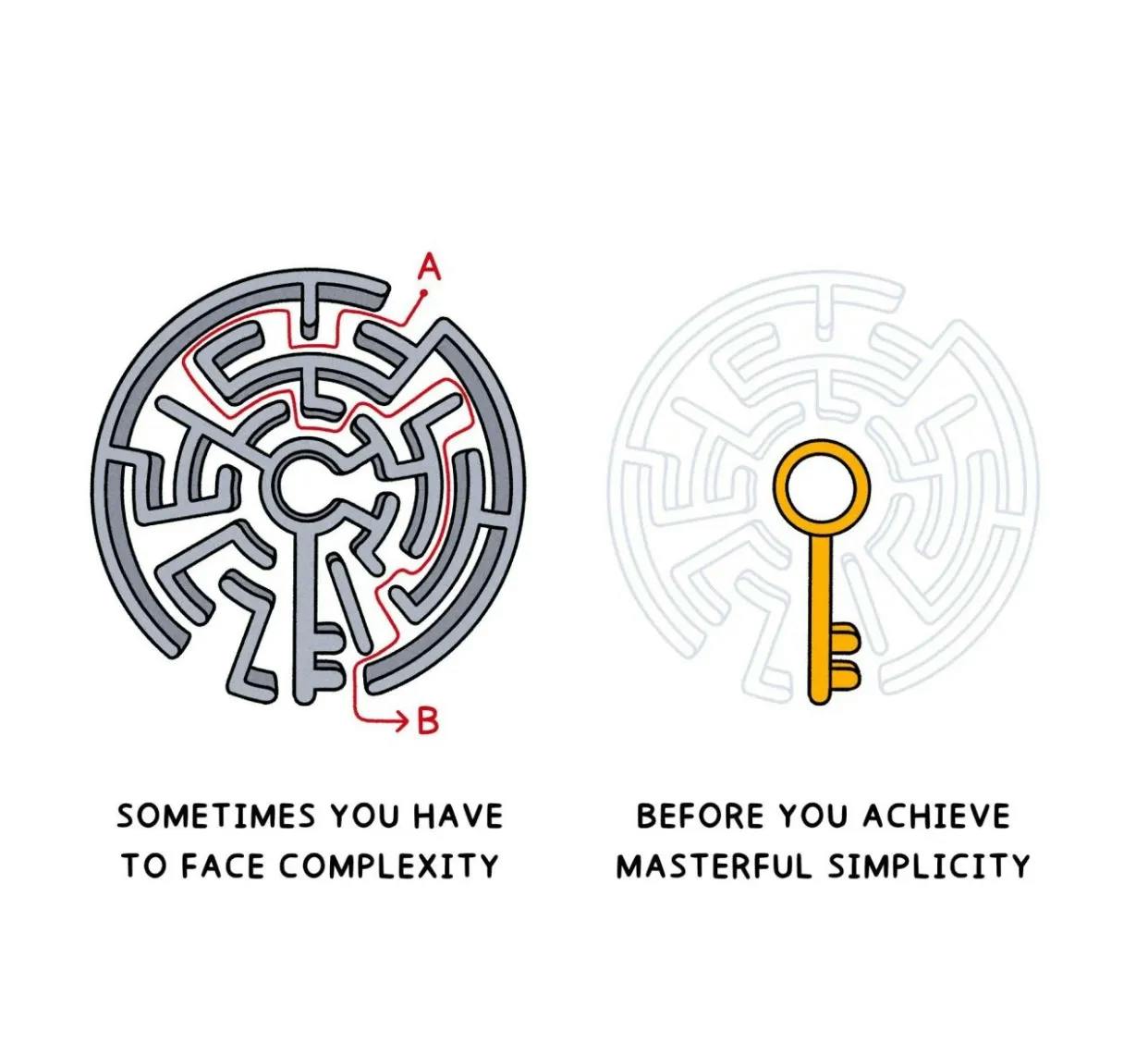The Secret to Building Complex Products

Start at the end with the simplest solution and work backwards.
With the right approach, design teams can navigate these challenges and create products that are both powerful and user-centered. Here are a few strategies to consider:
Start with Simplicity
Always strive for the simplest solution that meets the user’s needs. Don’t add complexity for complexity’s sake. If possible, remove contributors early who won’t align with this approach.
Embrace Abstraction
When dealing with intricate systems, abstraction can be your ally. Break down complex problems into smaller, more manageable chunks.
Seek Feedback Early and Often
Don’t wait until the end of the design process to seek feedback. Get input from users and stakeholders throughout the project.
Tools I use:
Emphasize User Experience
Never lose sight of the user. Design with intentional compassion for real world situations, understanding the user’s needs, goals, and limitations.
Embrace Collaboration
Complexity often requires a team effort. Collaborate with engineers, data scientists, and other stakeholders to tackle challenges from multiple perspectives.
Remember, complexity is not a roadblock; it’s an opportunity for creativity and innovation. By embracing the challenges it presents, design teams can create products that are not only functional but also elegant and user-friendly. So, the next time you face a complex design problem, don’t run away; embrace it, conquer it, and let your design shine through the haze of complexity.
What helps you design complex experiences?
References
Previous
Invisible Leadership